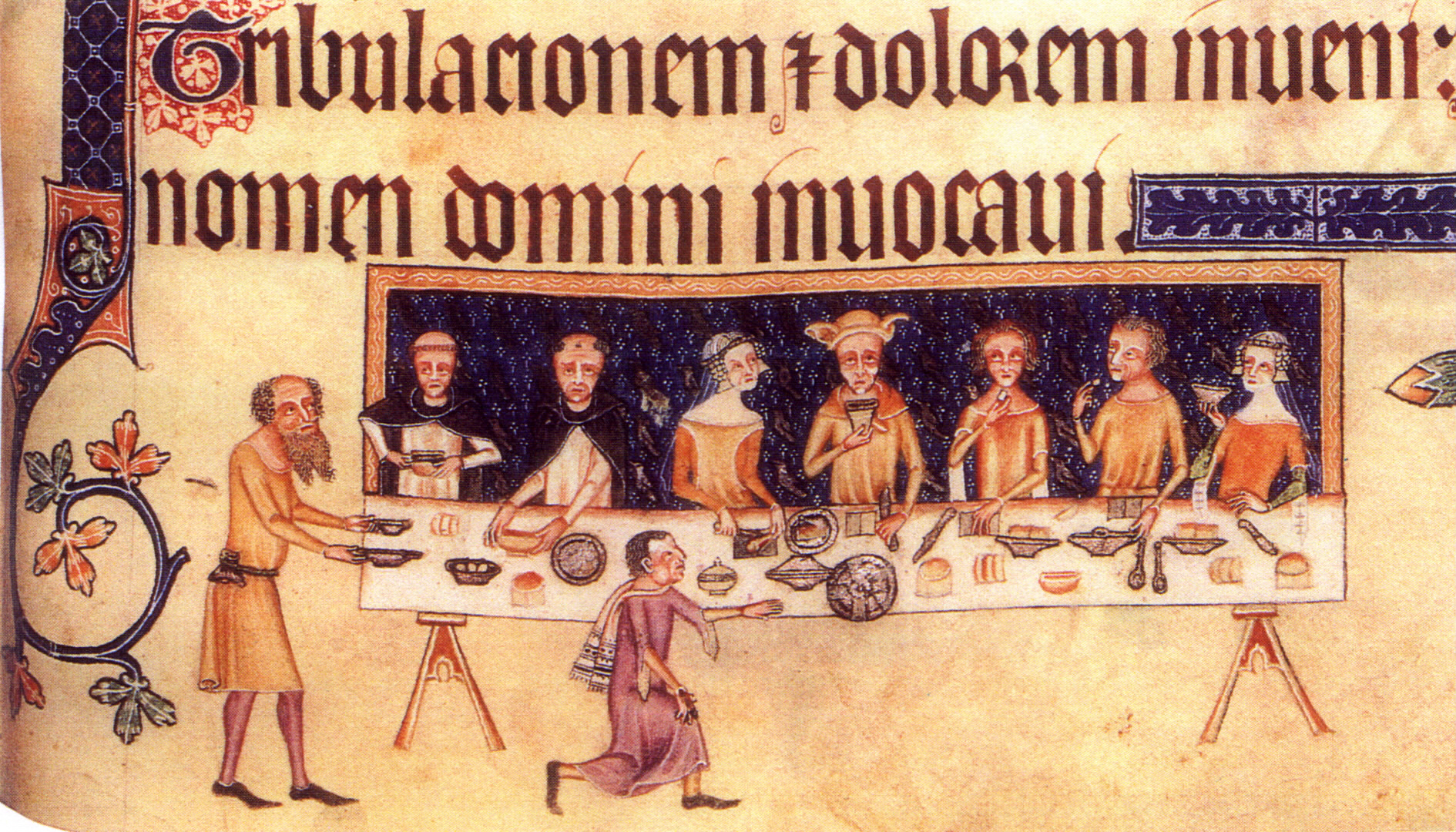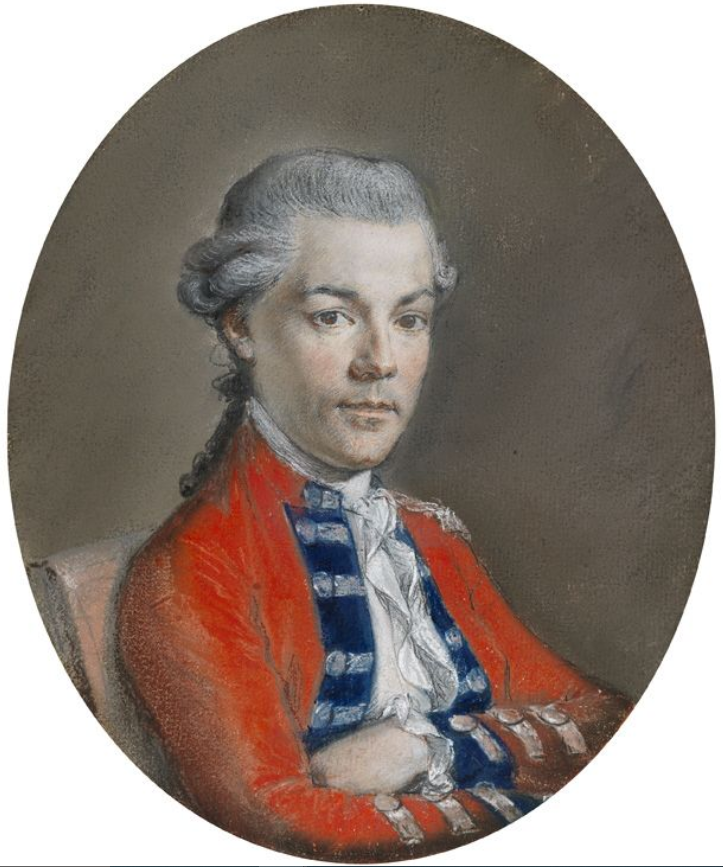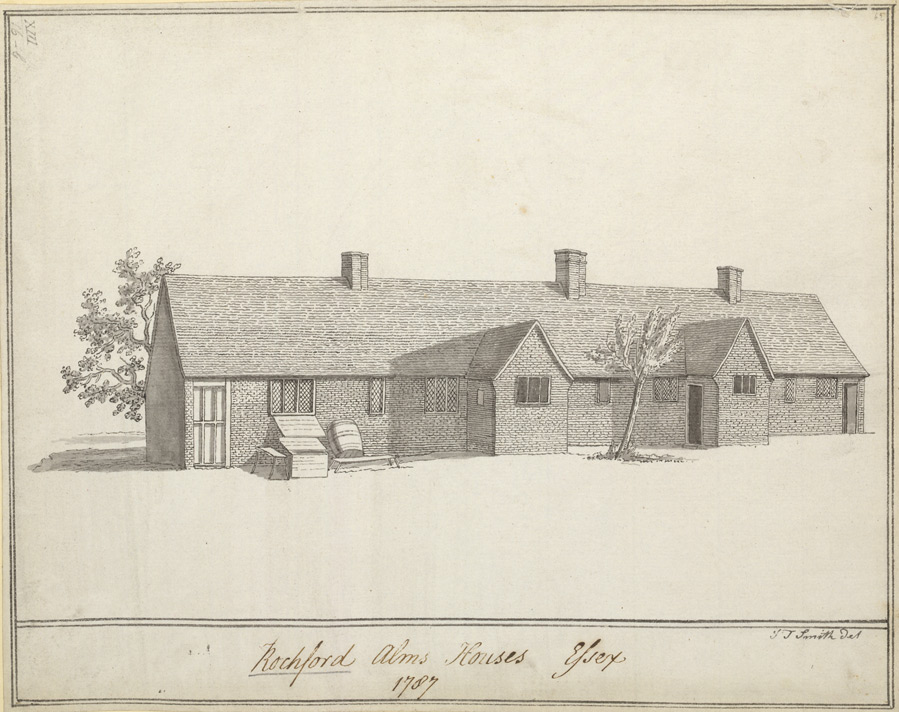|
Irnham
__NOTOC__ Irnham is a village and Civil parishes in England, civil parish in South Kesteven, Lincolnshire, England. It is situated approximately south-east from Grantham. To the north is Ingoldsby, Lincolnshire, Ingoldsby and to the south-west, Corby Glen. The village is on a high limestone ridge that forms part of the Kesteven Uplands. The civil parish of Irnham includes the hamlets of Bulby and Hawthorpe, Lincolnshire, Hawthorpe. The similar extent parish, ecclesiastical parish is Irnham, part of the Beltisloe rural deanery in the Diocese of Lincoln, and part of a Group which includes Corby Glen and Swayfield, sharing a single priest. The parish church is dedicated to St Andrew. History Irnham is listed as "Gerneham" in the Domesday Book of 1086. It was probably founded by an Anglo-Saxon thegn named Georna, hence Georna's Ham (or settlement). Scenes of 14th-century life in the village are depicted in the Luttrell Psalter. Irnham Hall Irnham Hall was the ancient seat o ... [...More Info...] [...Related Items...] OR: [Wikipedia] [Google] [Baidu] |
Luttrell Psalter
The Luttrell Psalter (British Library, Add MS 42130) is an illuminated manuscript, illuminated psalter commissioned by Sir Geoffrey Luttrell (1276–1345), lord of the manor of Irnham in Lincolnshire, written and illustrated on parchment ''circa'' 1320–1340 in England by anonymous scribes and artists. Along with the psalms (beginning on folio 13 r.), the Luttrell Psalter contains a calendar (1 r.), canticles (259 v.), the Mass (liturgy), Mass (283 v.) and an antiphon for the dead (295 r.). The pages vary in their degree of illumination, but many are richly covered with both decorated text and marginal pictures of saints and Bible stories, and scenes of rural life. It is considered one of the richest sources for visual depictions of everyday rural life in medieval England, even though the last folio is now lost. The Psalter was acquired by the British Museum in 1929 for £31,500 from Mary Angela Noyes, wife of the poet Alfred Noyes, with the assistance of an interest-free loan fr ... [...More Info...] [...Related Items...] OR: [Wikipedia] [Google] [Baidu] |
Mary Thimelby
Mary Thimelby (1610 – 31 August 1690) was an English prioress of St Monica at Leuven. Life left, Irnham Hall, near Bourne, Lincolnshire more recently Thimelby was born in Irnham Hall in Lincolnshire. Her parents were Mary (born Brookesby) and Richard Thimelby. Her ancestors were known for harbouring Catholics hiding from the Protestant authorities. Her father spent a year in the Tower of London around the time of her birth and her mother was brought up by her widowed mother Eleanor Brooksby and her sister Anne Vaux. They harboured many priests including Henry Garnet who was executed in 1605 for his part in the Gunpowder Plot. The families were discriminated against as Catholics and fined regularly. Irrespective of this the Thimbleby's kept a full time priest at the home. Her father wanted to have at least one of his children to follow a religious life and Mary decided that she would like to be a nun. She and her younger sister, Frances, joined the nuns at St. Monica's Convent ... [...More Info...] [...Related Items...] OR: [Wikipedia] [Google] [Baidu] |
Jones Baronets Of Treeton (1919)
The Jones baronetcy, of Treeton in the County of York, was created in the Baronetage of the United Kingdom on 23 May 1919 for the Yorkshire industrialist Frederick Jones. His son, the 2nd Baronet, was also a businessman. The family seat is Irnham Hall in Irnham, Lincolnshire. Jones baronets, of Treeton (1919) * Sir Frederick John Jones, 1st Baronet (1854–1936) * Sir Walter Benton Jones, 2nd Baronet (1880–1967) *Sir Peter Fawcett Benton Jones, 3rd Baronet (1911–1972) *Sir Simon Warley Frederick Benton Jones, 4th Baronet (1941–2016 *Sir James Peter Martin Benton Jones, 5th Baronet (born 1973) The heir apparent An heir apparent is a person who is first in the order of succession and cannot be displaced from inheriting by the birth of another person. A person who is first in the current order of succession but could be displaced by the birth of a more e ... is the present holder's son Blake Alexander Benton Jones (born 2009). Notes {{reflist Baronetcies in the Baronet ... [...More Info...] [...Related Items...] OR: [Wikipedia] [Google] [Baidu] |
Grantham
Grantham () is a market town and civil parish in the South Kesteven district of Lincolnshire, England, situated on the banks of the River Witham and bounded to the west by the A1 road (Great Britain), A1 road. It lies south of Lincoln, England, Lincoln and east of Nottingham. The population in 2016 was put at 44,580. The town is the largest settlement and the administrative centre of the South Kesteven District. Grantham was the birthplace of the UK Prime Minister Margaret Thatcher. Isaac Newton was educated at The King's School, Grantham, the King's School. The town was the workplace of the UK's first warranted female police officer, Edith Smith (police officer), Edith Smith in 1914. The UK's first running diesel engine was made there in 1892 and the first tractor in 1896. Thomas Paine worked there as an excise officer in the 1760s. The villages of Manthorpe, Grantham, Manthorpe, Great Gonerby, Barrowby, Londonthorpe and Harlaxton form outlying suburbs of the town. Etymology ... [...More Info...] [...Related Items...] OR: [Wikipedia] [Google] [Baidu] |
Bulby
__NOTOC__ Bulby is a hamlet in the South Kesteven district of Lincolnshire, England, and in the civil parish of Irnham, Bulby and Hawthorpe. The village is situated west of the A15, east of the A1, and approximately north-west from the town of Bourne. In 1872 the two hamlets of Bulby and Hawthorpe were grouped as Bulby-cum-Hawthorpe forming the eastern side of Irnham parish, being a joint township with a population of 180 in "of fertile land". About of Bulby-cum-Hawthorpe land was purchased by Rev. William Watson Smith in about 1840, who built on it the Elizabethan-style Bulby House and grounds. By 1872, Bulby House and of township land was owned by Gilbert Heathcote-Drummond-Willoughby, 1st Earl of Ancaster (Lord Aveland), who was lord of the manor. A moated area evident at the time was said to be the site of Bulby Hall which is "supposed to have been burnt down in the Barons' wars". Bulby has close associations with farming, has a number of surrounding farms, and a pla ... [...More Info...] [...Related Items...] OR: [Wikipedia] [Google] [Baidu] |
Hawthorpe, Lincolnshire
__NOTOC__ Hawthorpe is a hamlet in the South Kesteven district of Lincolnshire, England, and the civil parish of Irnham, Bulby and Hawthorpe. It is west from the A15, east from the A1, and north-west from the town of Bourne. Hawthorpe is mentioned in the ''Domesday Book'' as "Awartorp", in the Beltisloe Hundred of Kesteven. It comprised 2 households, 2 villagers and 4 freemen, with 2.9 ploughlands, a meadow of and woodland of . In 1066 the Lord was Healfdene; after 1086 Lordship was given to Alfred of Lincoln. In the 1872 '' White's Directory'' the two hamlets of Bulby and Hawthorpe were grouped as Bulby-cum-Hawthorpe forming the eastern side of Irnham parish, being a joint township with a population of 180 in "of fertile land". About of Bulby-cum-Hawthorpe land was purchased by Rev. William Watson Smith in about 1840, who built on it the Elizabethan-style Bulby House and grounds. By 1872, Bulby House and of township land was owned by Gilbert Heathcote-Drummond-Will ... [...More Info...] [...Related Items...] OR: [Wikipedia] [Google] [Baidu] |
Corby Glen
Corby Glen, formerly just Corby, is a village and civil parish in the South Kesteven district of Lincolnshire, England. It is approximately south-east of Grantham and north west of Bourne. In 2011 it had a population of 1,017. History The Church of England parish church dedicated to Saint John the Evangelist dates in part from the 12th century and has a notable collection of 14th- and 15th-century murals. Following the purchase of Irnham Hall by a Protestant family in the mid-19th century the Catholic Chapel of the hall was taken down and re-erected in Corby Glen as the Roman Catholic Church of Our Lady of Mount Carmel to the designs of architects Weightman, Hadfield & Goldie. A thousand wagonloads of material were carried between the two sites. The new church opened in 1856. The church closed in 2012. The church and the attached presbytery are Grade II Listed buildings. The village's first Methodist chapel was built in 1846, and replaced in 1902 by the present building ... [...More Info...] [...Related Items...] OR: [Wikipedia] [Google] [Baidu] |
Earl Of Carhampton
Earl of Carhampton was a title in the Peerage of Ireland. It was created in 1785 for Simon Luttrell, 1st Viscount Carhampton. He had already been created Baron Irnham, of Luttrellstown in the County of Dublin, in 1768 and Viscount Carhampton, of Castlehaven in the County of Cork, in 1781, also in the Peerage of Ireland. He was the son of Henry Luttrell. His daughter Anne Horton married Prince Henry, Duke of Cumberland and Strathearn (brother of then King George III). Lord Carhampton was succeeded by his eldest son, the second earl. He was a general in the British Army and served as the commander-in-chief of Ireland from 1796 to 1798. He was childless and was succeeded by his younger brother, the third earl. He was a captain in the Royal Navy and also sat as Member of Parliament for Stockbridge. He married as his first wife the Honourable Elizabeth Olmius (died 1796), daughter of John Olmius, 1st Baron Waltham, and assumed in 1787 by royal licence the additional surname of Olmi ... [...More Info...] [...Related Items...] OR: [Wikipedia] [Google] [Baidu] |
Beltisloe
Beltisloe is a Deanery of the Diocese of Lincoln in England, and a former Wapentake. The Wapentake of Beltisloe was established as an ancient administrative division of the English county of Lincolnshire before the Norman Conquest of 1066.Open Domesday: Wapentake of Beltisloe in 1066 and 1086 accessed 9 May 2020.Allen.History of the County of Lincoln. p.277 In a wapentake was the division of a for administrative, military and judicial purposes under the |
South Kesteven
South Kesteven is a Non-metropolitan district, local government district in Lincolnshire, England, forming part of the traditional Kesteven division of the county. Its council is based in Grantham. The district also includes the towns of Bourne, Lincolnshire, Bourne, Market Deeping and Stamford, Lincolnshire, Stamford, along with numerous villages and surrounding rural areas. South Kesteven borders North Kesteven to the north, South Holland District, South Holland to the east, the City of Peterborough and North Northamptonshire to the south, Rutland to the south-west, the Borough of Melton, Melton district of Leicestershire to the west, and the Newark and Sherwood district of Nottinghamshire to the north-west. History The district was formed on 1 April 1974 under the Local Government Act 1972. It covered the area of five former districts from the administrative counties of England, administrative county of Kesteven, which were all abolished at the same time: *Bourne, Lincolnshir ... [...More Info...] [...Related Items...] OR: [Wikipedia] [Google] [Baidu] |
Norman Architecture
The term Norman architecture is used to categorise styles of Romanesque architecture developed by the Normans in the various lands under their dominion or influence in the 11th and 12th centuries. In particular the term is traditionally used for English Romanesque architecture. The Normans introduced large numbers of castles and fortifications including Norman keeps, and at the same time monastery, monasteries, abbeys, churches and cathedrals, in a style characterised by the usual Romanesque rounded arches (particularly over windows and doorways) and especially massive proportions compared to other regional variations of the style. Origins These Romanesque architecture, Romanesque styles originated in Normandy and became widespread in northwestern Europe, particularly in England, which contributed considerable development and where the largest number of examples survived. At about the same time, Hauteville family, a Norman dynasty that ruled in Sicily produced a distinctive va ... [...More Info...] [...Related Items...] OR: [Wikipedia] [Google] [Baidu] |
Almshouse
An almshouse (also known as a bede-house, poorhouse, or hospital) is charitable housing provided to people in a particular community, especially during the Middle Ages. They were often built for the poor of a locality, for those who had held certain jobs, or their widows, and for elderly people who could no longer pay rent. They are generally maintained by a charity or the trustees of a bequest. " Alms" are, in the Christian tradition, money or services donated to support the poor and indigent. Almshouses were originally formed as extensions of the church system and were later adapted by local officials and authorities. History Many almshouses are European Christian institutions though some are secular. Almshouses provide subsidised accommodation, often integrated with social care resources such as wardens. England Almshouses were established from the 10th century in Britain, to provide a place of residence for poor, old, and distressed people. They were sometimes called b ... [...More Info...] [...Related Items...] OR: [Wikipedia] [Google] [Baidu] |







